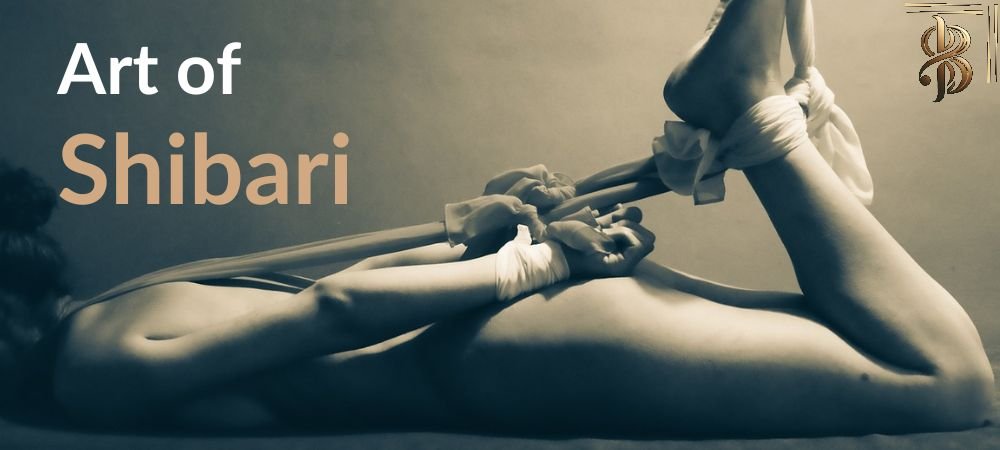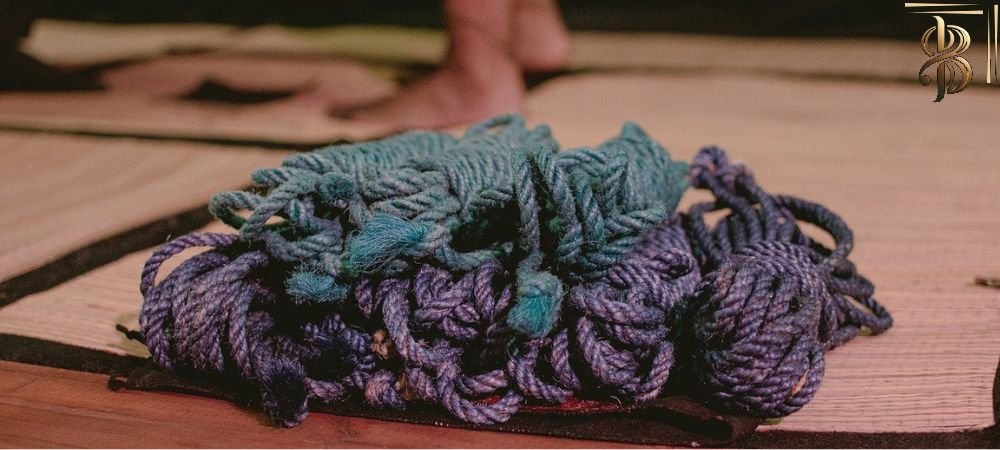
Introduction to The Art of Shibari
Shibari, often referred to as Japanese rope bondage, is a captivating form of artistic and sensual expression that has gained widespread popularity beyond its cultural origins. At its core, Shibari is more than just a practice of tying knots; it’s a profound way of communication and connection, blending aesthetics, trust, and emotion.
Definition and Origins of Shibari
The roots of Shibari can be traced back to ancient Japan. The term “Shibari” literally means “to tie” or “to bind” and is often thought to have evolved from Hojojutsu, a martial art used by the Samurai for restraining captives. However, Shibari’s evolution took a distinct turn, focusing more on the artistic and erotic elements rather than on restraint for practical purposes.
Hojojutsu, practiced since the mid-1400s, was a method used by Japanese warriors and law enforcement to capture and immobilize prisoners with rope. Over centuries, these techniques gradually transformed, intertwining with the realm of eroticism and art. This transformation was particularly influenced by the works of Ito Seiu in the early 20th century, who integrated rope bondage into his erotic and mythological art, setting the stage for Shibari’s emergence as a form of erotic and artistic expression.
Evolution of Shibari : From Traditional Practice to Western Popularization
Originally a niche practice rooted in Japanese tradition, Shibari has evolved significantly, gaining momentum in Western cultures, especially within the BDSM community. The transition from a martial art to an erotic art form was marked by the incorporation of Shibari into erotic photography and cinema, particularly in Japan’s “pink cinema” era. This period saw Shibari becoming a symbol of eroticism and sensuality rather than just a method of restraint.
In contemporary times, Shibari has transcended its traditional roots, becoming a global phenomenon. It is now celebrated as a form of personal expression, art, and connection, rather than just a BDSM activity. Enthusiasts and practitioners of Shibari often emphasize the deep emotional and psychological aspects, viewing it as a form of intimate art where the process of tying and being tied becomes a shared journey of trust and emotional release.
The modern practice of Shibari blends tradition with innovation, incorporating various materials like synthetic and colored ropes, and adapting to the evolving aesthetics and preferences of a diverse, global community.
Shibari’s growing popularity in the West is also a testament to the increasing openness towards diverse forms of expression within sexuality and art. It has carved out a unique space in the world of kink, art, and personal expression, continually evolving while still respecting its rich historical roots.
Shibari vs Traditional Bondage

While both Shibari and traditional bondage share the common element of using ropes for binding, there are distinct differences that set Shibari apart, particularly in terms of its aesthetic and erotic aspects.
Aesthetic Distinction
Shibari is renowned for its intricate and visually stunning patterns. Unlike traditional bondage, which often prioritizes functionality and restraint, Shibari is an art form that focuses on the beauty of the knots, the patterns created on the body, and the overall visual presentation. The aesthetic appeal in Shibari is not just an added benefit; it’s a fundamental aspect. Practitioners of Shibari take great care in the symmetry and balance of ropes on the body, creating elaborate designs that can be appreciated as a form of visual art.
Erotic and Sensory Experience
Shibari transcends beyond mere physical restraint, delving into the realms of sensory and erotic exploration. The process of tying and being tied in Shibari is seen as a deeply intimate act, often involving a strong emotional and psychological connection between the participants. This contrasts with traditional bondage, where the primary focus may be on domination and submission dynamics without the same level of emotional intensity or aesthetic consideration.
In Shibari, the ropes themselves are used to stimulate and tantalize. The way ropes are tied and the specific areas of the body they are applied to can create different sensory experiences. For instance, the tension of the ropes against the skin, the pressure on certain body parts, and the restriction of movement can all contribute to the overall sensory experience. Shibari practitioners often describe the experience as both meditative and exhilarating, offering a unique blend of pain, pleasure, and beauty.
Cultural and Philosophical Differences
Shibari is deeply rooted in Japanese culture and philosophy, which influences its practice and interpretation. It’s not just about the physical act of tying someone; it’s about the exchange of trust, the expression of vulnerability, and the creation of a shared experience. This cultural depth sets Shibari apart from traditional Western bondage practices, which may not always carry the same cultural or philosophical significance.
Material and Technique Variations
In Shibari, natural fiber ropes such as jute or hemp are often preferred due to their texture, strength, and traditional relevance. These ropes contribute to the overall aesthetic and sensory experience. In contrast, traditional bondage may use a variety of materials, including leather, chains, or synthetic ropes, often focusing more on functionality than on texture or visual appeal.
In summary, while Shibari and traditional bondage may appear similar at first glance due to their use of ropes, they are distinct practices with different focuses, techniques, and cultural underpinnings. Shibari stands out for its artistic beauty, deep emotional and sensory engagement, and its roots in Japanese tradition, offering a unique and multifaceted experience to its practitioners and observers alike.
Shibari vs Traditional Bondage
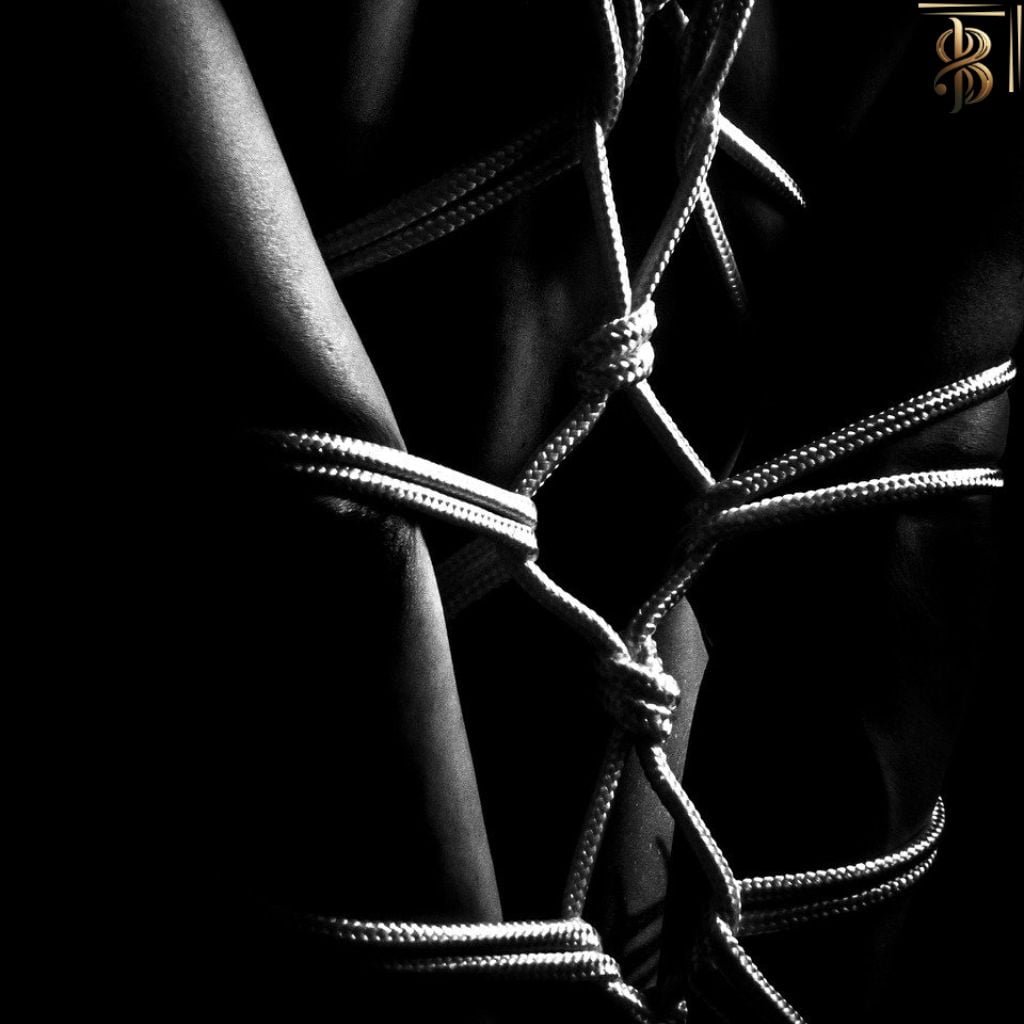
Shibari, often perceived as a delicate dance between art and technique, involves a variety of knots and patterns, each serving a different purpose and creating distinct visual and sensory experiences.
Shibari Techniques and Types of Knots
Single and Double Column Ties : These are the basic building blocks of Shibari, used to bind a single limb or two limbs together. The focus is on evenly distributing pressure while maintaining aesthetic appeal.
Decorative Ties : These include intricate patterns woven across the body, often without a specific functional purpose other than visual beauty. Decorative ties can be complex, requiring skill and patience.
Partial and Full Suspensions : Advanced Shibari includes suspending the bound person partially or fully off the ground. This requires precise knowledge of body mechanics and rope dynamics.
Floor-Based Shibari (Newaza) : Involves complex ties but performed with the bound person lying on the floor. It’s often used for intimate and sensual play.
Each knot and pattern in Shibari is chosen for both its aesthetic appeal and its impact on the body. The placement of knots and the tension in the ropes can stimulate pressure points, creating a unique sensory experience.
Common Materials Used
Natural Fiber Ropes : Jute and hemp are traditionally used in Shibari for their texture, strength, and aesthetic. They are preferred for their ability to hold knots securely and provide a certain roughness that enhances sensory play.
Cotton Ropes : These are softer and often used by beginners due to their affordability and comfort. However, they are less durable and can stretch over time.
Synthetic Ropes : Nylon and other synthetic materials are also used, particularly in Western adaptations of Shibari. They are easier to clean and maintain but may not offer the same traditional aesthetic or texture as natural fibers.
The choice of rope is not just a practical consideration; it’s a crucial element of Shibari’s aesthetic and sensory experience.
Importance of Safety and Basic Knowledge
Safety is paramount in Shibari. Due to the risk of nerve damage, circulation problems, or other injuries, it’s essential to have a fundamental understanding of anatomy and rope techniques before attempting any form of rope bondage. Beginners should start with basic knots and patterns, gradually progressing to more complex ties.
Communication : Always maintain open communication with your partner, checking in regularly for comfort and consent.
Quick Release : Keep safety shears or a similar cutting tool nearby in case of emergency.
Education : Participate in workshops, read instructional books, or learn from experienced practitioners to understand the nuances of rope tension, knot placement, and body safety.
Practice : Regular practice is vital to improve skill and ensure safety. Start with simple ties and gradually move to more complex patterns as you gain confidence and expertise.
In summary, the art and technique of Shibari blend aesthetics, sensory experiences, and a deep understanding of safety and human anatomy. Whether for artistic expression, intimate connection, or sensory exploration, Shibari is a discipline that requires respect, patience, and continual learning.
Shibari vs Traditional Bondage
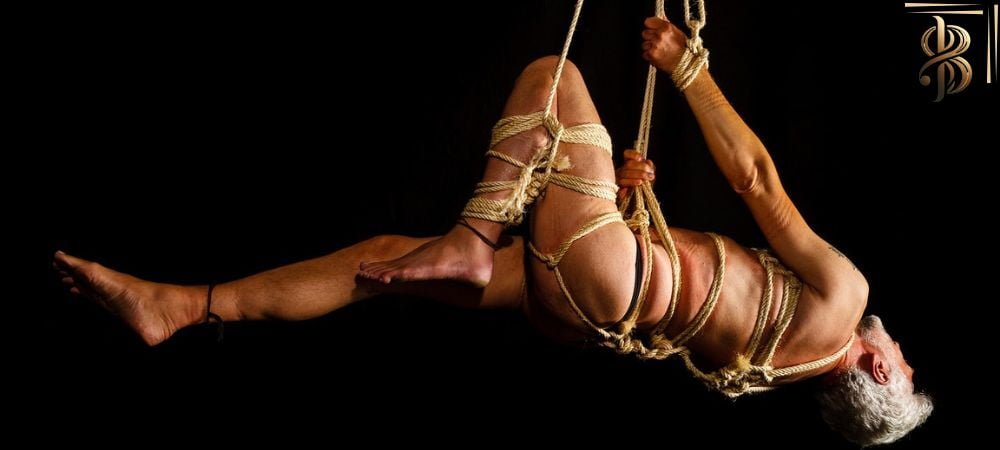
Shibari as a Form of Artistic Expression
Shibari has transcended its origins to become a dynamic form of artistic expression, captivating audiences worldwide through performances and installations. Its intricate patterns and the emotional depth of its practice have inspired artists and performers, leading to a fusion of traditional Japanese techniques with modern artistic sensibilities.
Examples of Performances and Artistic Installations Using Shibari
Interactive Exhibitions : Artistic installations involving Shibari often include interactive elements, allowing spectators to engage with the art form. These installations can transform spaces into immersive environments where the intricate beauty of Shibari ropes and knots are displayed.
Live Performances : Shibari is frequently featured in live performances, combining the art of rope bondage with dance, theater, and visual arts. These performances can range from intimate settings to large-scale productions, showcasing the versatility and expressive potential of Shibari.
Photography and Film : Shibari has been a popular subject in photography and film, where the visual aspect of the tied ropes against the human form creates compelling imagery. This medium explores the interplay of light, shadow, and form, further elevating Shibari’s aesthetic appeal.
Profiles of Renowned Artists in the Field
Marie Sauvage : A prominent figure in the world of Shibari, Marie Sauvage’s work is known for its blend of artistic elegance and technical proficiency. She trained under the renowned Shibari master Hajime Kinoko, absorbing the intricacies of traditional Japanese rope tying. Her performances and installations are celebrated for their creativity and emotional depth, often taking place in diverse venues ranging from art galleries to public spaces.
Hajime Kinoko : A master of Shibari, Kinoko is renowned for his innovative approach to the art form. His work often explores the boundaries between tradition and contemporary art, making him a pivotal figure in the evolution of Shibari as a modern artistic expression.
Notable Events and Exhibitions
Shibari Crazy Year Event in Paris : This event stands as a testament to the growing popularity and artistic recognition of Shibari. It featured a series of artistic presentations and performances by renowned Shibari artists, including live demonstrations and interactive sessions. The event offered a unique opportunity for audiences to experience the beauty and complexity of Shibari in a vibrant artistic setting.
International Shibari Exhibitions : Across the globe, various art exhibitions and festivals feature Shibari, showcasing the work of international artists and performers. These events highlight the diverse interpretations and styles of Shibari, reflecting its global appeal and adaptability.
In essence, Shibari as a form of artistic expression bridges the gap between ancient tradition and contemporary art. It offers a unique medium for artists to explore themes of trust, vulnerability, and beauty, resonating with audiences in deeply personal and profound ways.
Shibari in Popular Culture and Media
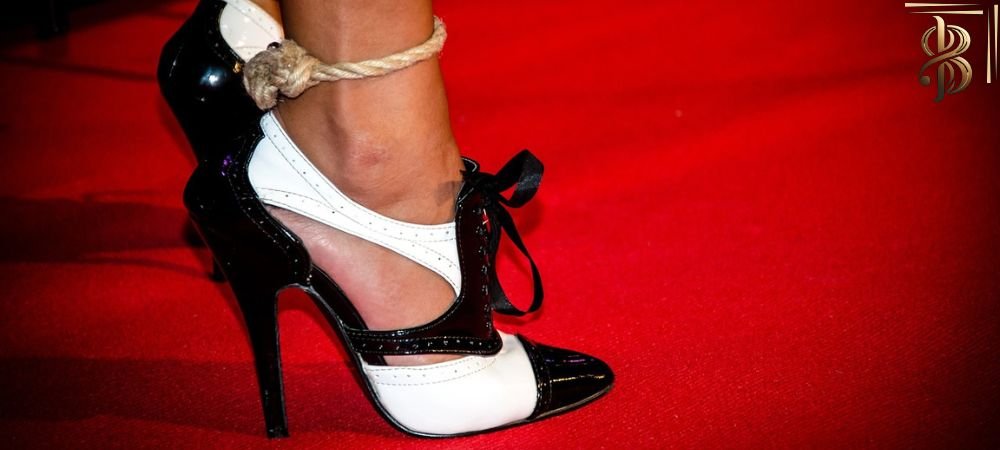
Shibari has woven its way into popular culture and media, transcending its origins to influence various forms of artistic expression. Its integration into mainstream media and its impact on fashion and photography highlight its growing acceptance and fascination.
Presentation of Shibari in Media
Radio Canada Feature : Shibari has garnered attention in mainstream media, as evidenced by its feature on Radio Canada. In this instance, Shibari was presented not just as an erotic practice but as an art form, bringing to the forefront discussions around its aesthetics, emotional depth, and the trust involved in the practice. Such mainstream media features help demystify Shibari, presenting it in a nuanced and respectful manner.
Documentaries and Films : There are several documentaries and films that explore the world of Shibari, delving into its history, cultural significance, and its place in modern society. These media portrayals often focus on the personal stories of those who practice Shibari, highlighting its emotional and artistic aspects.
Influence on Fashion, Photography, and Other Art Forms
Fashion Industry : Shibari has inspired fashion designers, resulting in clothing and accessories that mimic rope patterns and the aesthetic of Shibari ties. This influence is evident in high-fashion photoshoots and runway shows, where elements of Shibari are used to create bold and striking designs.
Photography : Shibari has become a popular subject in the world of photography. The intricate patterns of ropes on the human body offer a unique visual element, creating powerful and evocative images. Photographers often use Shibari to explore themes of vulnerability, strength, and beauty, pushing the boundaries of traditional portrait and figurative photography.
Performance Art and Theater : Shibari has been incorporated into performance art and theater, often used to convey complex emotional narratives or to add a visual element to stage performances. In these contexts, Shibari is used not only for its aesthetic value but also for its ability to evoke emotional responses from the audience.
Art Installations and Exhibitions : Artists have used Shibari in installations and exhibitions, utilizing the ropes and knots to create sculptures and other visual art forms. These installations often encourage viewers to contemplate themes of connection, restraint, and the human form.
The integration of Shibari into popular culture and media signifies a broader acceptance and curiosity about this intricate art form. It continues to inspire artists across various disciplines, contributing to a rich tapestry of creative expression that transcends traditional boundaries.
Learning and Practicing Shibari
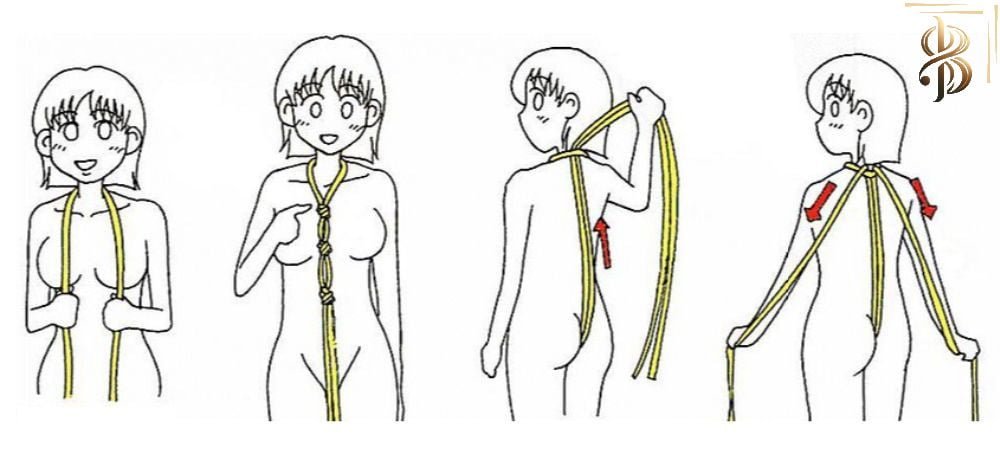
Shibari, as an art form, requires dedication and proper education to practice safely and effectively. There are numerous resources available for those interested in learning Shibari, ranging from schools and workshops to online courses and literature.
Resources for Learning Shibari
Shibari Schools and Workshops : Many cities around the world have schools or studios dedicated to teaching Shibari. These schools often offer a range of classes from beginner to advanced levels, providing hands-on experience under the guidance of experienced instructors. For example, in Paris, the École des Cordes is known for its comprehensive Shibari courses.
Online Courses and Tutorials : The internet is a treasure trove of resources for learning Shibari. Websites like Shibari Academy offer structured online courses, from introductory lessons to more advanced techniques. Free tutorials are also available on platforms like YouTube, although the quality and safety of these can vary.
Books on Shibari : Several informative books have been written on the subject, providing both theoretical knowledge and practical instructions. Titles such as “The Seductive Art of Japanese Bondage” by Midori and “Shibari You Can Use” by Lee Harrington come highly recommended for beginners.
Important Safety Tips for Beginners
Start Slowly : Begin with basic knots and patterns, and gradually progress to more complex ties.
Learn Anatomy and Rope Safety : Understanding human anatomy, especially regarding nerve pathways and circulation, is crucial to prevent injuries.
Use Safe Words and Signals : Establish clear communication protocols with your partner, including safe words or signals to indicate discomfort or the need to stop.
Keep Emergency Tools Handy : Always have safety scissors or a similar cutting tool within easy reach to quickly release ropes if necessary.
Practice Consensual Bondage : Consent is paramount in Shibari. Ensure all activities are consensual and respect boundaries.
Shibari Schools and Trainers in France and Internationally
France : In Paris, the École des Cordes is well-regarded for its Shibari classes. Lyon Shibari in Lyon also offers learning opportunities for those interested in this art form.
Internationally : Schools like Shibari Study (online) and Shibari Academy offer comprehensive courses that can be accessed globally. In cities like London, Berlin, and Tokyo, local workshops and classes are regularly conducted by experienced practitioners.
Individual Trainers : Many renowned Shibari artists offer private lessons or workshops. Researching local Shibari communities or attending events can provide connections to experienced trainers in your area.
By utilizing these resources and adhering to safety guidelines, beginners can embark on their Shibari journey with confidence and respect for the art form. Whether through formal classes, online learning, or self-study with books, the world of Shibari is accessible to those who approach it with curiosity and care.
Conclusion
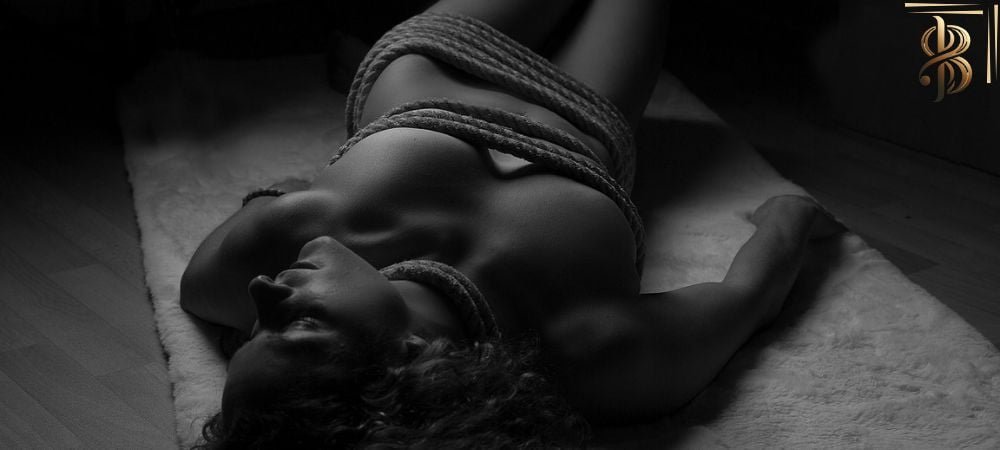
As we reflect on the journey through the intricate world of Shibari, it’s clear that this art form holds a significant cultural and artistic impact. Originally a method of restraint, Shibari has evolved into a profound medium of expression, intertwining tradition with modern creativity.
Cultural and Artistic Impact of Shibari
Shibari’s transformation from a method of binding prisoners to a celebrated art form is a testament to its deep-rooted cultural significance and adaptability. It’s a practice that goes beyond the physical, delving into the realms of emotional and psychological connection. In the modern context, Shibari transcends cultural barriers, becoming a global phenomenon that resonates with diverse audiences.
Artistically, Shibari challenges conventional views of beauty and intimacy. It juxtaposes vulnerability with strength, control with surrender, creating a unique visual and emotional language. Its influence on fashion, photography, and performance art is a clear indication of its versatility and capacity to inspire.
The Future Evolution of Shibari
Looking ahead, Shibari’s role in arts and society is poised for further evolution. As awareness and understanding of this art form grow, so does its integration into mainstream culture. Shibari is likely to continue influencing various art forms, potentially leading to new expressions and interpretations.
In the societal context, Shibari presents an opportunity for discussions around themes of trust, consent, and the exploration of alternative forms of beauty and expression. It challenges norms, encouraging a broader acceptance of diverse forms of self-expression.
As Shibari continues to evolve, it remains anchored by its deep cultural roots and the principles of respect, consent, and safety. Its future in the arts and society will likely be marked by a continued blending of tradition with innovation, reflecting the dynamic nature of human expression.
In conclusion, Shibari stands as a powerful symbol of the intertwining of tradition and modernity, of art and emotion. The Art of Shibari invites us to explore the depths of human connection and creativity, offering a unique window into the complexities of the human experience.
Sources :
External resources that helped my personal experience in writing this article:
“The art of Shibari on Radio Canada” from Tensionmtl, providing insights into Shibari’s media representation
“L’art du shibari selon Marie Sauvage” from PressReader, detailing the journey and works of Shibari artist Marie Sauvage
“Shibari: Guide for Sensually Tying Your Partner” from Edenight, offering a comprehensive understanding of Shibari techniques and materials
“2022 Archives – Shibari, l’art de Seb Kinbaku” from Shibari-artist.com, discussing contemporary Shibari events and developments
“Shibari Crazy Year Paris” from Théâtre du Temps, highlighting a notable Shibari event in Paris
“Photographer and Trainer in Shibari and Kinbaku” from CmonBook, showcasing the works of Shibari artist Seb Kinbaku

